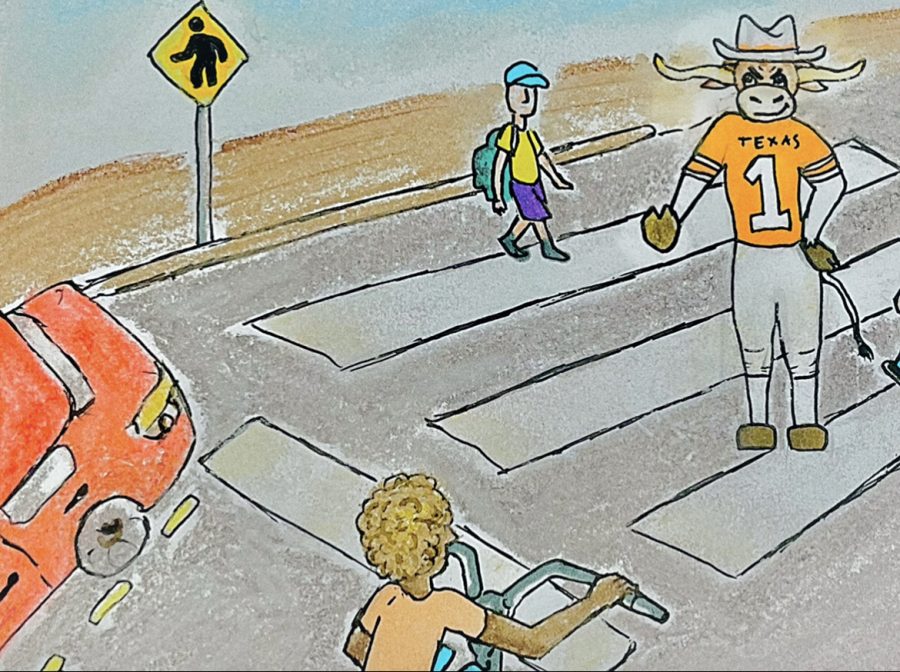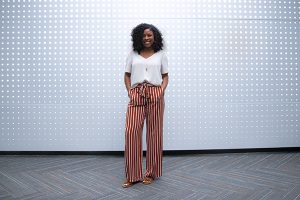UT needs to do more for pedestrian safety
September 25, 2022
Surrounded by intoxicated people in the dead of night, a disoriented Keith Ramirez tried to find a bus stop. After spending the evening on campus working the concession stand after a football game, Ramirez ran into problems getting home: there were very few signs and lights.
“It was 11 at night, so I had to go around, and it was super dark,” Ramirez said. “It was kind of scary, because … anything can happen to me.”
Being a pedestrian on the UT campus is difficult, especially after events with heavy traffic, such as football games. Common problems pedestrians face include a lack of lighting, poor vegetation management and outdated traffic markers. With October coming up as National Pedestrian Safety Month, UT needs to listen to experts concerning changes for pedestrian safety.
SafeHorns, a nonprofit organization seeking to improve safety at the University, is set to partner with Austin Energy to improve lighting in West Campus, a major win for pedestrian safety. It took three years of working with the campus and eventually partnering with Austin Energy to make the change.
However, this announcement did not alleviate all pedestrian concerns. Lighting in other locations near campus, signage and foliage maintenance issues are still common problems.
Public health freshman Margaret Nassuna is one student who noticed poor lighting around campus.
“I had come back from a concert on Monday … and the lights weren’t too bad, but I just feel like there could be more because it’s a bit dim, and someone could easily be hurt,” Nassuna said.
Despite the work from campus groups, several experts say that the University has not done enough.
“There needs to be a study, a campaign, and more effort to have this conversation,” SafeHorns president Joell McNew said.
Kara Kockelman, a professor of transportation engineering, examined the effectiveness of UT’s efforts toward pedestrian road safety and has cited issues with campus receptiveness.
“I have been working for over a year to try to get the crosswalks repainted on campus. … They can’t even figure out who used to do that,” Kockelman says. “I’ve been bringing these things to the attention of Parking and Transportation (Services) for a couple years at least. But they’re like, ‘We don’t do that.’ Who else is going to do striping but Parking and Transportation?”
UT has made some improvements for pedestrian safety, such as adding enhanced lighting to building entrances and adding bollards, or short posts, to protect pedestrians. While other measures can take a longer time to implement, there are other strategies students can use to keep themselves safe, such as obeying traffic laws, looking both ways and staying alert.
“The safety and security of our campus community is priority. The University continues to take steps to maintain and implement measures to ensure a safer campus,” Veronica Trevino, Assistant Director of Issues Management, said in an email.
Although these suggestions and measures can help students stay safe, the University has a responsibility to make changes based on an expert’s opinion. UT shouldn’t expect students to be solely responsible for their safety when experts have advised administration on ways to make campus safer.
“I think there’s always ways that we can do more, and it shouldn’t be looked on as a negative,” McNew said. “It should be that we’re proud to do better and to make this Longhorn journey the best that it can be for our students.”
Students, pedestrians and qualified experts have all made suggestions on how to enhance the pedestrian experience. UT can make the campus safer by listening to their experts on ways to make the University more pedestrian-friendly.
Emejulu is a computational engineering freshman from Austin, Texas.











